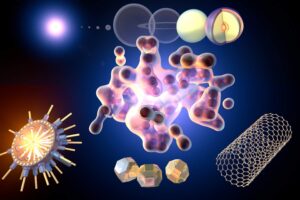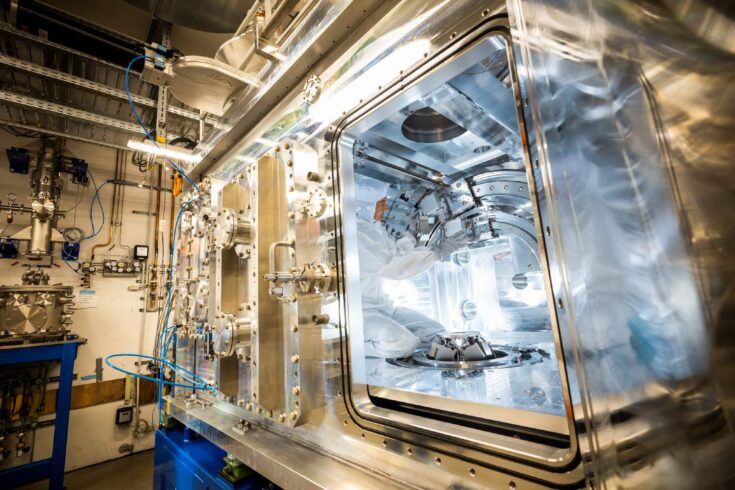The international research collaboration was led by the University of Rostock and the Helmholtz-Zentrum Dresden-Rossendorf (HZDR).
They used complementary technologies from the Science and Technology Facilities Council (STFC) and the European X-ray Free Electron Laser (XFEL) to create and measure liquid carbon.
Liquid carbon is a substance that can be found in the interior of planets and plays an important role in future technologies like nuclear fusion.
The results were published in the paper ‘The structure of liquid carbon elucidated by in situ X-ray diffraction’ on 21 May 2025, in leading science journal, ‘Nature’.
Complementary technologies
The experiment was only made possible through the combination of the UK built DiPOLE 100-X (D100-X) laser and the European XFEL facility near Hamburg, Germany.
The D100-X laser created conditions that liquifies solid carbon samples for billionths of a second, while the X-ray beam captured diffraction patterns that reveal the atomic arrangement in the liquid carbon.
Professor John Collier, Director of STFC CLF, said:
This discovery showcases UK capabilities at their finest. The DiPOLE 100-X system represents years of UK expertise enabling measurements once thought impossible.
We’re proud that in partnering with our colleagues at the European XFEL, our technology is helping scientists from around the world understand these novel states of materials.
A comprehensive picture
Each experiment lasts only fractions of a second but is repeated many times with slightly different parameters.
These snapshots of the diffraction patterns are then combined to create a comprehensive picture of carbon’s transition from solid to liquid phase.
Extreme scientific challenge
Impossible to study in the lab, little was known about carbon in its liquid form because it doesn’t melt under normal pressure. Instead, it immediately changes into a gaseous state.
Only under extreme pressure and at temperatures of approximately 4,500°C, the highest melting point of any material, does carbon become liquid.

An artist’s impression of liquid carbon. Credit: Martin Kuensting, HZDR
On the other hand, laser compression can turn solid carbon into liquid for fractions of a second. The challenge was to use these fractions of a second to take measurements.
This has now become a reality at the European XFEL with the D100-X system, which was designed to study extreme states of matter, such as liquid carbon.
A successful measurement
The measurements revealed that with four nearest neighbours each, the systemics of liquid carbon are like solid diamond.
The researchers also precisely determined carbon’s melting point, resolving disagreements among previous theoretical predictions.
This precise knowledge, assisted by UK technology, is crucial for accurate planetary modelling and for developing certain concepts of power generation through nuclear fusion.
Professor Dominik Kraus, Head of Carbon Working Group from the University of Rostock and HZDR, explained:
This is the first time we have ever been able to observe the structure of liquid carbon experimentally.
Our experiment confirms the predictions made by sophisticated simulations of liquid carbon. We are looking at a complex form of liquid, comparable to water, that has very special structural properties.
New possibilities
STFC’s laser system has opened new research possibilities that were previously unimaginable.
In the future, results that currently require several hours of experiment time could be available in just seconds, once the complex automatic control and data processing systems are optimised.
DiPOLE 100 lasers soon available in the UK
The DiPOLE 100 laser technology will be available at STFC’s new Extreme Photonics Application Centre (EPAC), Rutherford Appleton Laboratory, based at the Harwell Campus in Oxfordshire.
This will allow UK researchers and international collaborators to conduct similar experiments right here in the UK.
EPAC is due to come online in 2026.

